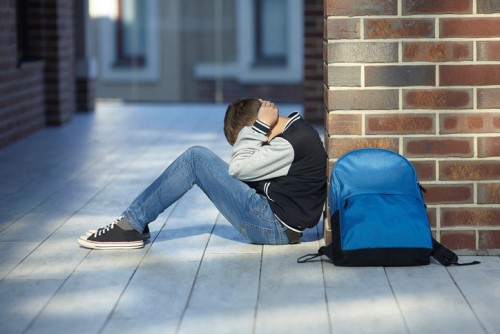
As reports show an uptick in bullying and the tragic effects that it can have on student wellbeing, there has been a groundswell of school anti-bullying programs and campaigns in Australia to stamp out the problem.
However, according to one academic, schools should examine whether their anti-bullying programs might actually be exacerbating the issue.
Karyn Healy, a researcher at the University of Queensland, says that while schools’ intentions are good, often these programs have not been properly evaluated for effectiveness, and studies show some types of programs can actually make bullying worse.
In an article published in The Conversation, Healy pointed to a 2010 meta-analysis of bullying programs which studied the effectiveness of several anti-bullying programs in schools.
“There are several ways to explain these different findings. Firstly, in the observational study the effect on bullying was judged in the few seconds after the bystander action. We don’t know if bullying resumed the next day,” Healy said.
“The meta-analysis included studies that examined bullying weeks or months later. We know from previous research that actions that seem effective in the short-term can have harmful long-term effects.”
Healy said there may also be crucial differences between naturally occurring bystander actions and those encouraged by schools.
“The effectiveness in natural situations may rely on who the student bystander is and their relationship with those involved in bullying. School programs may encourage students with poor skills to get involved which may escalate the situation,” she said.
“Future research may explain differences between effective and ineffective bystander actions. In the meantime, schools should exercise caution in using this approach.”
Difference among programs
Healy said the 2010 meta-analysis showed that, overall, school-based anti-bullying programs decrease bullying and victimisation by around 20%, with similar reductions for cyber-bullying.
However, she said this, and other meta-analyses, report substantial differences between programs.
“Another recent meta-analysis looked separately at anti-bullying programs in primary schools and high schools. On average, programs in primary schools were effective,” Healy said.
“But in high schools, anti-bullying programs were just as likely to make bullying worse as they were to improve it. The exact reason for these differences is not known.”
Healy said there are many reasons why efforts to change behaviour may have unintended negative effects.
“Perhaps the emphasis on stopping bullying in high schools provokes student who bully and undermines the reputation of students who are bullied,” she said.
So, which programs work?
Healy said the 2010 meta-analysis showed programs that reduce bullying are likely to take more time to implement, involve parent meetings, firm disciplinary methods and improved playground supervision.
“It can be hard for schools to know what programs are effective because this takes a lot of time,” she said, pointing to independent scientific organisations that evaluate evidence for program effectiveness, including Blueprints (US) and the Early Intervention Foundation (UK).
“To really know if a program works, research needs to compare outcomes over time between students who receive the program and students who don’t.”
Healy said it is also best to randomly allocate students or schools to receiving the program or not, to help ensure the groups are equivalent in the first place.
“These types of studies are called randomised controlled trials. Programs that have been shown to be effective by randomised controlled trials include the Friendly Schools Program and Positive Behaviour for Learning,” she explained.
“The Friendly Schools Plus program helps schools build supportive practices, teach social skills and build partnerships with parents.”
Healy said a randomised controlled trial showed this program reduced victimisation and observations of bullying over three years.
“Positive Behaviour for Learning helps schools improve discipline by teaching expected behaviour and establishing clear rewards and consequences. It is widely used in Australian schools,” she said.
“A randomised controlled trial found this program reduced bullying in primary schools.”
Healy said schools are under great pressure to visibly take action against bullying. However, she said caution is needed, especially in high schools, because many programs that sound like a good idea can make bullying worse.
“Schools should stick with what they know works and only adopt new programs that have been adequately evaluated,” Healy said.


